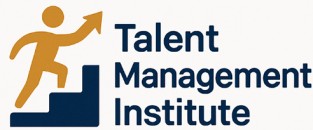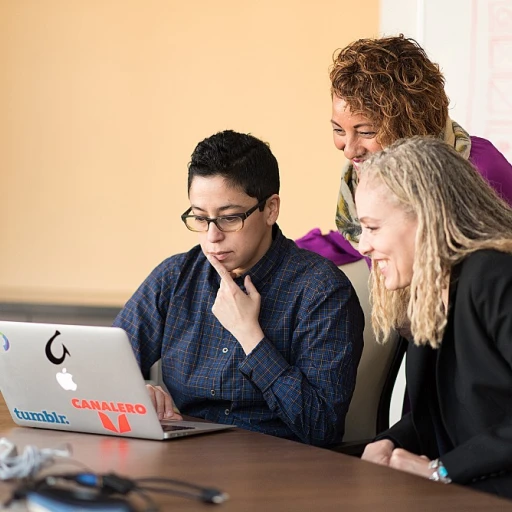
Understanding Ageism in Professional Environments
Unveiling the Hidden Layers of Ageism
Understanding ageism in professional environments begins by acknowledging that age discrimination is still a prevailing issue in many industries. Despite increased awareness, older employees often face unfair treatment due to stereotypes associated with their age. This can manifest in various forms, such as being overlooked for opportunities, facing biased evaluations, or being nudged towards early retirement.
An age-diverse workforce brings a wealth of experience and perspectives, yet age-based discrimination persists. Older workers may find themselves battling assumptions that they are less capable of adapting to new technologies or resistant to change. Conversely, this age group is often seen as valuable for their deep industry knowledge and mentorship to younger employees.
Younger workers might experience a different facet of ageism, facing skepticism about their maturity or leadership potential. Both older and younger employees should be judged by their skills and contributions rather than preconceived notions based on their age. For employers, fostering an inclusive and age-diverse workplace reduces the risks of discrimination and can enhance overall workforce performance.
It's crucial to recognize these issues early on and address them with effective strategies that promote equality. Embracing the talents of employees across all age groups not only benefits the individuals but significantly contributes to the company's success as well.
Subtle Signs of Age Discrimination
Spotting Nuanced Age Discrimination
Ageism in the workplace is often not overt, but rather reveals itself through subtle cues and actions. These discrimination examples may go unnoticed at first, but they contribute significantly to an age-based bias against older employees. Understanding these signs is crucial for employees and employers alike, aiming to cultivate a fair work environment.
One sign of age discrimination is when older workers are passed over for promotions in favor of younger employees, despite having more experience and qualifications. Even when older employees meet or exceed the job requirements, the bias still might influence employer decisions, leading to feelings of inadequacy and employee disengagement.
Language used in day-to-day conversation may also reflect age bias. Terms like “over-the-hill” or referring to an older worker’s experience as "outdated" can contribute to a culture of subtle discrimination in the workplace. These terms might seem harmless, but they perpetuate stereotypes about retirement age workers.
Additionally, discrimination based on age can manifest in a more indirect form known as constructive dismissal. Here, an older employee may be pushed out of their position through exceedingly afflictive work conditions, rather than direct termination.
To enhance awareness and offer ways to tackle such issues, enhancing employee engagement through effective HR strategies is crucial. Employers must recognize these subtle signs to combat ageism and create a supportive atmosphere for all age groups.
Impact of Ageism on Employee Morale and Productivity
Ageism's Damaging Ripple Effect on Workplace Dynamics
In any work environment, the morale and productivity of employees are critical to a company's success. Ageism, however, can dramatically affect these factors, leading to a decline in overall workplace efficiency and harmony. Older employees, who are often targeted in contexts of discrimination based on age, can experience diminished morale due to feeling undervalued or overlooked in favor of younger colleagues.
Such discriminatory practices can manifest in various ways, from exclusion from professional development opportunities to lack of recognition for contributions. The examples of ageism are not only harmful to those directly affected but also create a toxic work culture that can impact all employees regardless of age. Consequently, younger employees may also develop misunderstandings about their older counterparts, further driving a wedge in team cohesion.
Moreover, the stress related to ageism can lead to reduced job satisfaction and increased turnover rates. When older workers feel marginalized, their productivity suffers, and they may even opt for early retirement rather than facing ongoing discrimination. Such outcomes are damaging not only to the individuals involved but also to the organization, which loses valuable expertise and skills.
It's crucial for employers to recognize the signs of age discrimination and address them effectively to prevent negative impacts on their workforce. Creating an inclusive work environment where all age groups feel valued and respected is essential in fostering a productive, harmonious workplace.
Legal Implications of Age Discrimination
Navigating Legal Terrain: Understanding the Consequences
In the realm of employment law, age discrimination is a serious concern, increasingly relevant in today's diverse workplace environments. With legislation in place to protect employees, understanding the legal implications is crucial for both employers and employees aged across all age groups. The laws surrounding age discrimination are designed to prevent employers from basing job-related decisions solely on a worker’s age. This not only applies to older workers but also younger employees who might face biases in professional settings. In many jurisdictions, the Age Discrimination in Employment Act (ADEA) is a key legislation that offers a layer of protection against age-based discrimination for those over 40. Employers found guilty of age bias can face severe legal penalties. These can range from hefty fines to costly lawsuits, which can tarnish a company's reputation and lead to significant financial loss. Importantly, companies are more frequently held accountable for subtle signs of ageism, such as overlooking older employees for promotions or making dismissive comments about their ability to adapt to new technologies. It's essential for organizations to recognize the ripple effects of ageism in the workplace. A legal grievance not only disrupts work dynamics but also impacts employee morale and productivity, affecting workers across various roles and age groups. To mitigate legal risks, companies should actively foster an inclusive work culture, ensuring policies explicitly prohibit age discrimination. Offering training to recognize and combat ageism is a proactive approach. Employers can also seek examples of successful diversity initiatives that enhance understanding across different age groups. For employees, awareness of their rights under employment law is vital. Those suspecting age discrimination must gather substantial evidence, such as patterns of exclusion or derogatory statements tied to their age. Employees who feel marginalized can explore several legal avenues, ensuring they are well-informed of their rights and options. Logging any instances of suspected age bias and seeking HR consultation can be initial steps. Navigating age bias challenges requires a holistic understanding of the legal landscape, empowering both employees and employers to foster a fair and equitable work environment.Strategies to Combat Ageism in the Workplace
Addressing Age Bias in the Workplace: Effective Strategies
Combatting ageism in the workplace demands strategic planning and awareness among both employers and employees. While age discrimination can manifest insidiously, a proactive approach helps foster an inclusive environment where experience is valued. Here are some tactics to mitigate age bias effectively:- Promote Awareness and Education: Organize workshops and training sessions to educate employees about the importance of diversity, including age diversity. This can help in identifying subtle signs of age discrimination and reduce ignorance-based age biases.
- Encourage Diverse Work Teams: Building teams with a mix of younger and older employees can break down stereotypes, encouraging collaboration that highlights the value of diverse perspectives and experiences.
- Implement Fair Employment Practices: Ensure that recruitment, promotions, and other employment decisions are based on merit rather than age. Regular audits and reviews of employment practices can help maintain fairness in these processes.
- Foster a Culture of Respect: Engage in open dialogues about age biases and encourage respect for all workers, regardless of their age group. This includes recognizing the unique contributions of older workers as valuable assets to the company.
- Re-evaluate Retirement Policies: While retirement age policies might be standard, offering flexible options can help retain experienced employees who are not ready to retire. This could include part-time roles or consulting positions.
- Provide Opportunities for Continuous Learning: Offering training programs for older employees to learn new skills or technology can help them stay competitive and engaged. It's crucial for employers to invest in all age groups to ensure they keep pace with industry changes.













